To Index Home Page
To View The Images:
Click
IMAGES ONLY
Then use your mouse
with the slider on the right of this frame
to view the 40 + images.
And See All The Images:
Click
FULL TUTORIAL

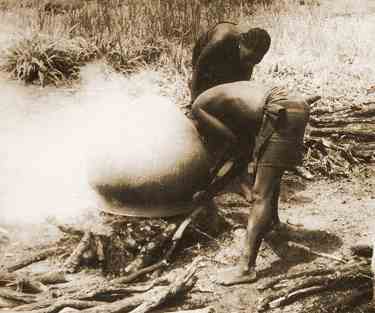
An ancient tradition in Nigeria: large pot being slowly dried out over smoldering embers before being fired.

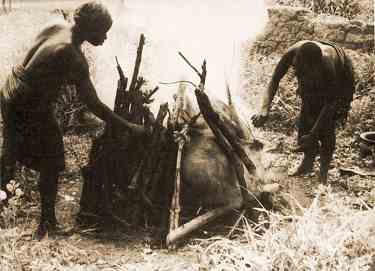
Large pot being slowly dried out over a low fire.

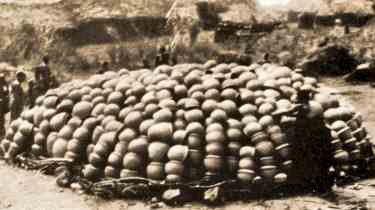
Preparations for a bonfire firing of a few hundred cooking pots. Brushwood has been laid out to cover a circular area and starting from the centre pots have been piled on top of each other to build a dome like structure gradually enlarged to cover the circle of brushwood. More brushwood will be added on top of the pots and then the fire started.

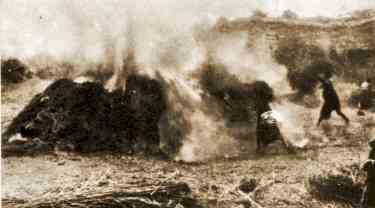
This photograph shows a bonfire firing of pots in progress, with brushwood being added from time to time over a period of a day to gradually raise the temperature up to red heat.

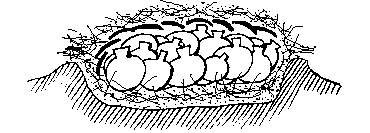
This diagram shows the cross-section of a typical pit bonfire. brushwood beneath and on top of the layer of pots a wind shield made of shards - broken pieces of fired pots. More brushwood is piled on top before the fire is lighted.

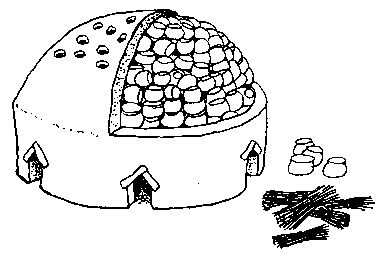
This primitive kiln is an advance on bonfire firings. It consists of a rough circular stone wall made from lumps of stone and shards with clay mud. There are openings for stoking the fire. A temporary domed roof was plastered over the pots for protaction with openings left for the heat and smoke to escape.

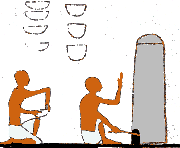
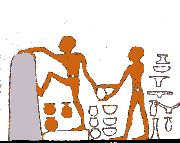
These images of ancient Egyptian potters of the second millennium BC. are based on wall paintings in tombs. On the left a potter is stoking the fire of a tall domed kiln. On the right a potter is plastering the domed roof after loading,(or perhaps beginning to unload the fired pots. The fact that the potters in this scene are wearing little or nothing, suggests the hot atmosphere.

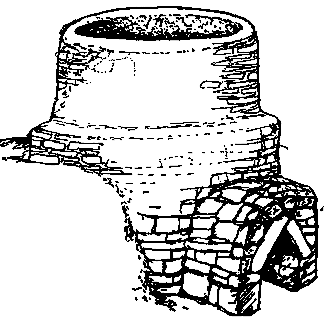
This drawing and the next one show further important developments in the updraft kiln: a single large firebox stretching underneath the chamber holding the pots. The flames pass through holes in the floor into the pots above.

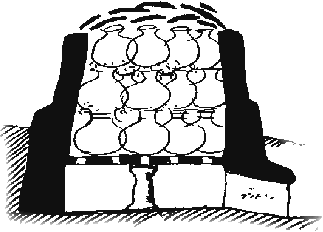
Village potters were still firing kilns of this type in Crete, Spain and North Africa at the end of the twentieth century. This is a cross-section of the same kiln. One stoke hole which leads into a main firebox. Its roof of brick or pieces of stone is pierced at intervals with holes to allow the flames and heat to reach the pots above.

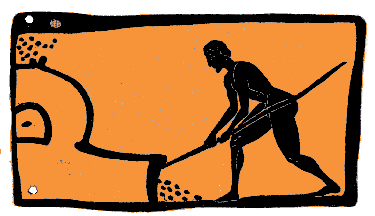
The last four illustrations of early kiln represent one of the types of kiln the Greeks were using in the 5th century BC. This diagramatic slip drawing on a fragment of greek pottery shows that these potters used round updraft kilns with removable doors for placing and retrieving pots from the kiln. The whole structure is now permanent with a small chimney at the top.

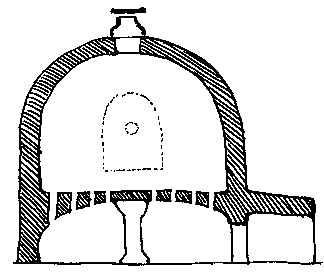
A dotted line shape represents the door into the kiln chamber. The loading and emptying of the kiln is now quite simple. The bottonless water jar serves as a very short chimney, it can be covered partially or completely with a tile to alter the draft or atmosphere of the kiln.

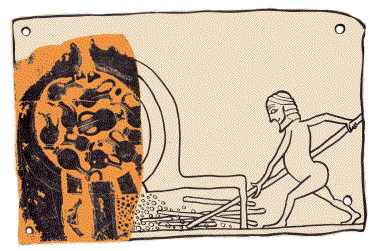
This ancient worn pottery fragment and part reconstructed drawing combines a side and plan view of a pottery kiln from ancient Greece. We can see the sort of pots that were being fired.

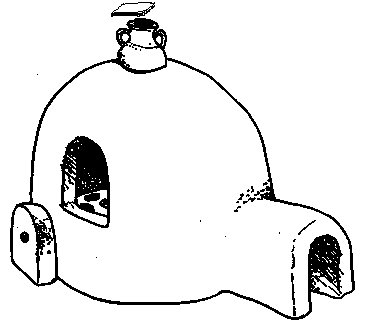
This was the most advanced type of kiln in the classical world. Used by the Greeks, it was copied by the Romans and with small variations remained the model for centuries in the Western World.
This is the last illustration.
I hope you have found tutorial No.3 interesting and perhaps useful.
Tutorial No.4 is about the unexpected prehistoric origins of frits and the way the earliest glazes developed out of frit paste.

That was the last illustration in this tutorial

Last modified on 1st April 2001
©2000 Victor Bryant
To Index Home Page